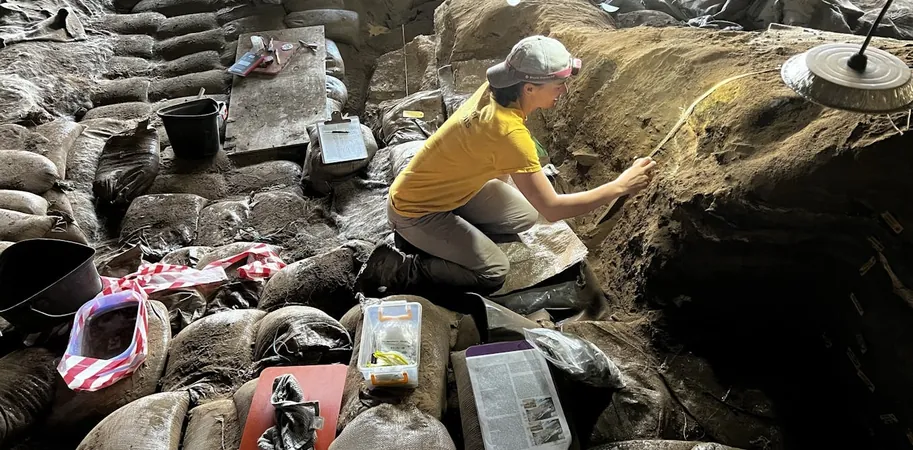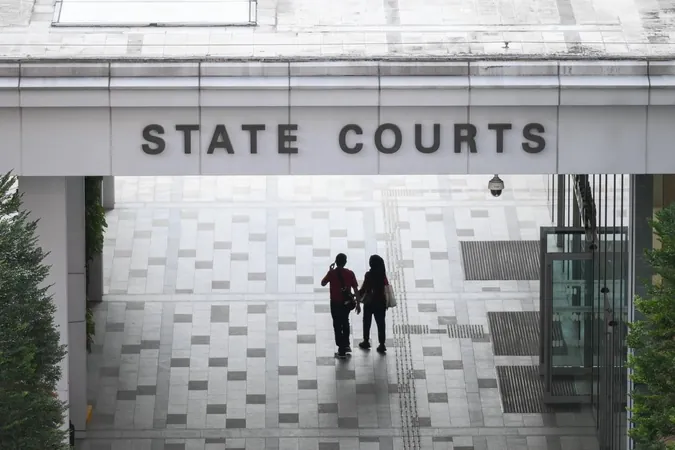
Uncovering Humanity's Survival: How Volcanic Glass Reveals Secrets of the Toba Supereruption
2025-09-11
Author: Siti
Imagine surviving one of Earth’s most cataclysmic events—74,000 years ago, the Toba supereruption rocked the planet like never before. This monstrous explosion, more than 10,000 times the magnitude of the 1980 Mount St. Helens eruption, left a profound mark on both the environment and humanity.
The Cataclysm That Changed Everything
The Toba volcano, nestled in modern-day Indonesia, spewed an astonishing 672 cubic miles (2,800 km³) of volcanic ash high into the stratosphere, creating a crater larger than 1,000 football fields. This eruption cast a shroud over the Earth, plunging it into darkness and causing a dramatic drop in temperatures that lasted for years. Acid rain poisoned water sources, and vast ash deposits buried landscapes, threatening all life forms.
How Did Humans Endure Such Destruction?
Despite the odds heavily stacked against early humans, some populations survived. The Toba catastrophe hypothesis suggests a chilling possibility: global temperatures plummeted, leading to a drastic reduction in human populations, potentially to fewer than 10,000 individuals. This theory is partially backed by genetic evidence indicating a genetic bottleneck in modern humans.
Digging for Answers: The Role of Volcanic Glass
To unravel the mysteries of survival post-Toba, scientists are studying the eruption’s rock and ash remnants—known as tephra. Among these, tiny fragments of volcanic glass called cryptotephra are crucial. These minuscule shards are almost invisible, requiring meticulous work to extract using specialized tools. Their unique chemical signatures guide scientists in understanding the eruption's reach and impact.
Resilience in the Face of Catastrophe
Surprisingly, archaeological findings convey a story of resilience. In South Africa's Pinnacle Point 5-6, evidence indicates that humans thrived before, during, and after the Toba eruption with an increase in activity and innovation. Similarly, in Ethiopia's Shinfa-Metema 1 site, ancient inhabitants adapted by following seasonal rivers and embraced new hunting technologies, displaying remarkable flexibility in the face of environmental challenges.
Lessons from the Past: Preparing for the Future
While the Toba supereruption posed a significant challenge, the archaeological record suggests that humanity can adapt and overcome. Given our current advancements, such as volcano monitoring programs, our preparedness today far surpasses that of our ancestors. By analyzing how ancient populations survived past disasters, we draw vital lessons that can guide our responses to future cataclysmic events. Understanding our past resilience fuels hope and adaptation strategies for the challenges ahead.




 Brasil (PT)
Brasil (PT)
 Canada (EN)
Canada (EN)
 Chile (ES)
Chile (ES)
 Česko (CS)
Česko (CS)
 대한민국 (KO)
대한민국 (KO)
 España (ES)
España (ES)
 France (FR)
France (FR)
 Hong Kong (EN)
Hong Kong (EN)
 Italia (IT)
Italia (IT)
 日本 (JA)
日本 (JA)
 Magyarország (HU)
Magyarország (HU)
 Norge (NO)
Norge (NO)
 Polska (PL)
Polska (PL)
 Schweiz (DE)
Schweiz (DE)
 Singapore (EN)
Singapore (EN)
 Sverige (SV)
Sverige (SV)
 Suomi (FI)
Suomi (FI)
 Türkiye (TR)
Türkiye (TR)
 الإمارات العربية المتحدة (AR)
الإمارات العربية المتحدة (AR)